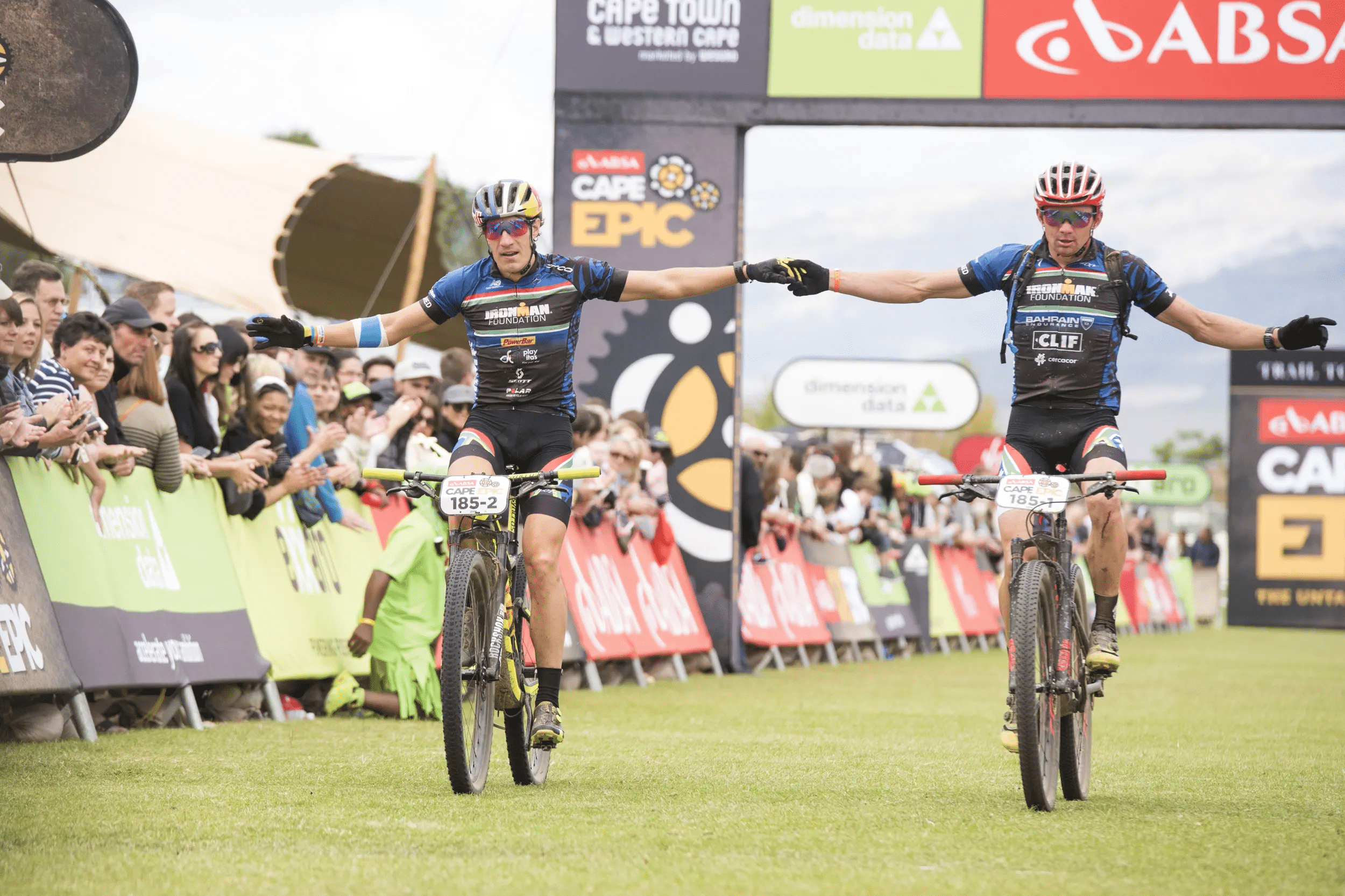By Ben Hoffman
When athletes strive to get the best out of themselves in preparation for a big event, it often requires “playing with the edge". This can be a precarious spot; necessary in the pursuit of big goals, but also flirting with the beginnings of illness, injury, overtraining, and excessive fatigue. I find myself on this precipice a couple of times a year, preparing as best as possible for an upcoming IRONMAN race. The edge is thin, and while I have been fortunate to avoid crossing over the line most of the time, I have certainly pushed beyond it on occasion. Getting to this point, playing with this line, is part of the journey and can be a big asset to your growth as an athlete.

The question then becomes, "How do we stay on the safe side of the edge?" Although we all crave a simple solution, this is a multi-faceted problem that takes all kinds of monitoring, and some level of experimentation within each training cycle. Having gone through this several times in my career gives me a unique perspective, and here is some of what I have learned:
- Put a major emphasis on recovery.
It’s easy to get completely wrapped up in your training, hitting the numbers, logging the miles, and looking for the weekly improvements. I say “wrapped up” but often we find ourselves borderline obsessed when such big goals hang in the balance. It is crucial to make sure that any time you are not training, you are doing things that will aid your recovery. I realize this isn’t as easy as it sounds, as many of us have families, jobs, and other life obligations. Unfortunately, recovery still needs to be the priority during those times if you want to improve and avoid injury. Find some creative ways to work stretching, going to bed early, eating properly, and giving your body and mind what it needs. It could be as easy as curbing or substituting adult beverages for better sleep, doing an easy yoga routine with your kids, leaving your phone to charge in the kitchen instead of the bedroom, or just sitting or lying down at every chance you get. Training is hard, but recovery is harder.

- Know your baselines.
We all work off of heart rate zones, watts, TSS scores, etc. It is essential to know your baselines for training to quantify progress in each session, but it is also important to know these numbers when it comes to your overall physical health. I have been using Cercacor's Ember to establish these zones for the past few years and it has been very helpful in determining my day-to-day training readiness, recovery, and overall picture of health.
Overtraining can begin to show itself in a few different ways in Ember. Just one hemoglobin reading can point to a variety of things: increase/decrease of plasma volume, hydration levels, effects of altitude training, or response to a heavy training load or particular session. Additionally, pulse rate variability is a great indicator of your heart's readiness from moment to moment, showing whether you might want to back off and recover a little more, or push harder to optimize a moment of particular strength and preparedness.
Using the Ember at certain important times during your day and training can help you to really hone in on what information a reading is showing. For instance, taking a “first of day” measurement every day will allow you to check-in with both your pulse rate, hemoglobin level, and oxygen content over an extended period of time by using the trend graphs. A lower hemoglobin reading or overall trend downwards could mean that you have a reduction in the available oxygen-carrying capacity in the blood and might be on the verge of overstepping. Similarly, taking a hemoglobin measurement pre and post-exercise on the same day will give you insight into your immediate hydration levels and how your body might be compensating to address the training load.
I use this device as more of a monitor than a traffic light. It can help me take the emotion out of how you are feeling and looking strictly at the data can focus your attention on trends rather than allowing a feeling to guide my choices. For an even deeper level of recording, there is an option for adding the emotional components to your hard data in app.

- Strive for balance (but don’t be too hard on yourself if it doesn’t seem achievable all the time).
Training for long-distance triathlon is a big job that takes endless hours of dedication and focus. I hear many people talk about “balance” when it comes to being successful in triathlon and life, but let’s be honest, “balance” is tough when you have big goals.
Remaining vigilant about your physical and mental health, your family support, and your job will benefit you greatly, but don’t be too hard on yourself when things don’t go exactly to plan. My only advice here is to be intentional with where you put your energy when you are doing an activity. Spending time with your family? Put your phone away and give them all the attention. Trying to get work done? Focus on the task at hand and minimize distraction. Training? Give it everything when you are out there, paying attention to the details of form, data points, and performance metrics.
- Do the work.
You are walking this edge for a reason, growth as an athlete, person, and competitor. Maybe you need to prove something to yourself, show your kids what hard work and commitment is all about, we all have our “why”. Do the work, recover, maintain a keen eye on your feedback in training and in your body, and most importantly keep the fire going when the going gets tough. Come race day, you can look back at all the work and lean hard on that. There is no substitute for consistency and doing the miles. Work works.
Keeping a keen eye trained on these areas will help guide you along your own personal edge. Stay focused on the numbers, parameters, and balance that work for you, rather than comparing where you are with someone else or going too far to achieve the “ideal”. Save the competition for race day! Stay healthy, stay engaged, and stay racing! I will see you out there.





